Gaming laptops are more famous than ever, and that’s defined through the fact that these days you can get a laptop that gives a computing device-like revel in in a incredibly portable shape element.
Gone are the days of ridiculously bulky laptops. Consumers by no means cherished them, but it become a important exchange-off on many ocassions. We're not but all the way down to ultraportable stages of comfort for a effective gaming unit, but in reality we are drawing close intently now that GTX 1060 laptops just like the Razer Blade are with no trouble to be had.
This is what makes Max-Q one in every of Nvidia's maximum interesting initiatives this yr, developing a hardware platform that brings even high-cease additives and their respective cooling solutions all the way down to the dimensions of modern-day GTX 1060 systems.
Read More :- Gigabyte U2442F Ultrabook Review
- Alienware 15 Review
- Apple MacBook Air 13" Mid-2012 Review
- Acer Timeline 14" 4810T Notebook Review
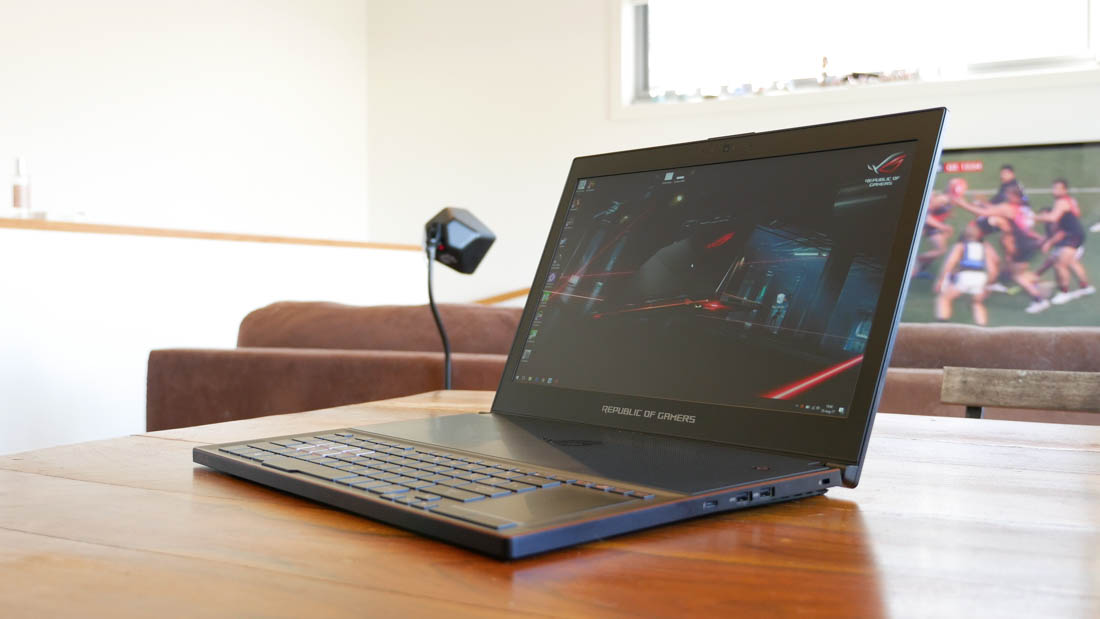
If you look up Max-Q, Nvidia will tell you all approximately the optimization they’ve performed to strength shipping components, coolers, drivers, and so forth to put effective GPUs in narrow laptops. It’s thrilling from an engineering viewpoint, however for people trying to simply buy a Max-Q pc, right here’s the fundamental info you want to know.
Max-Q brings the GeForce GTX 1080 and GTX 1070 GPUs into an 18mm-thick chassis with a cooler noise goal no better than 40 dBA. In different words, laptops that formerly were simplest able to consist of a GTX 1060 can now feature up to a GTX 1080, with a cooler that isn’t going to blow up your eardrums.
The Asus ROG Zephyrus is the flagship version for Max-Q. It comes with a totally-fledged GTX 1080 with 8GB of GDDR5, together with an Intel Core i7-7700HQ and 16GB of RAM, inside a chassis that’s 17.8mm thick and a pair of.three kg heavy. This makes the Zephyrus the slimmest GTX 1080 pc available on the market, and with the aid of a sizeable margin, too.
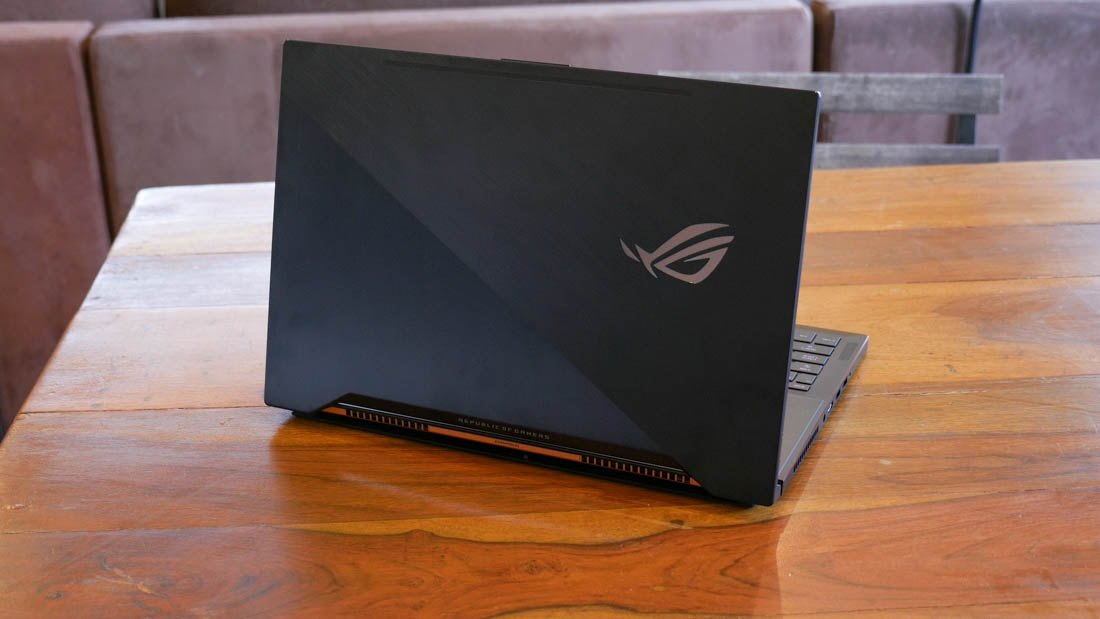
With this kind of hardware, in this type of shape issue, it’s no wonder the Zephyrus costs $2,seven-hundred in its general configuration. My Laptopunit, which bumps up the RAM to 24GB and the SSD from 512GB to 1TB, pushes the rate even higher.
Now that I’ve had extended hands-on time with the unit, it’s time to dive into the unique Zephyrus design. The most right now obvious component is the location of the keyboard, which sits at the bottom of the bottom so that you can make room for a huge slab of components on the top. We’ve seen this design before in laptops that included deep mechanical keyboards, however here it’s basically to maximize area for the narrow cooler key to hitting Nvidia’s Max-Q necessities.
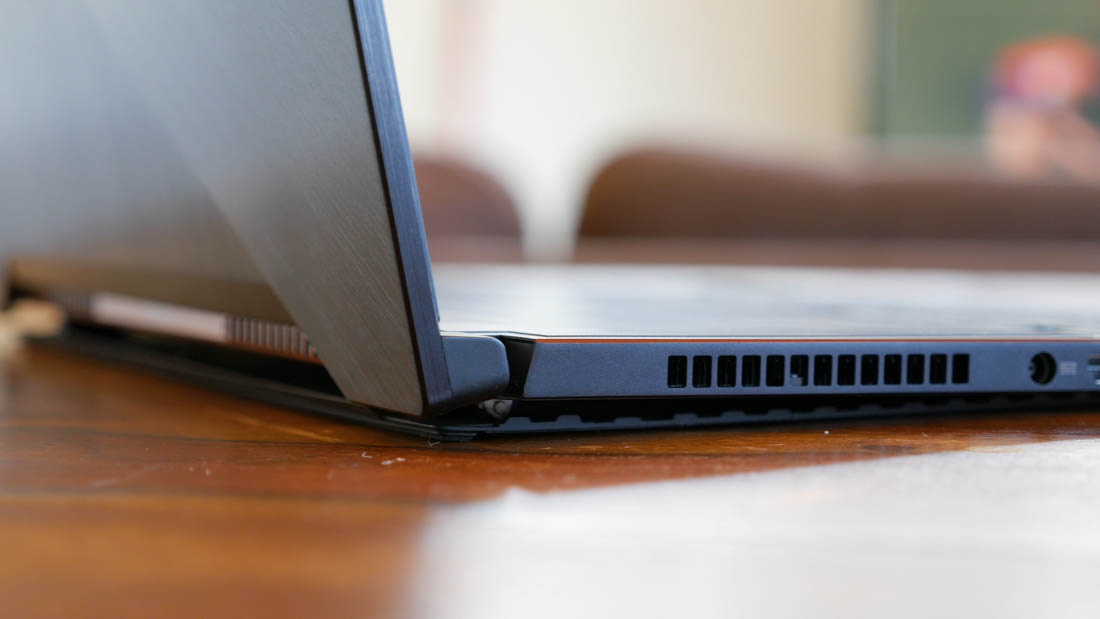
The cooling answer has every other unique element, and that’s the base that splits apart whilst the lid is open to make certain maximum airflow when sitting on a table. It’s a remarkable idea from a functional viewpoint, as it permits the computer to remain slender and forestalls the fan intakes from being obstructed. From a visual perspective though, the manner the base splits aside and the flimsy plastic production to the prolonged section makes the Zephyrus appearance broken, although it’s not.
This a part of the Zephyrus’ layout is in stark comparison to the relaxation, which could be very stable and top rate in both appearance and feel. Most of the base is constructed from single piece of metal with a matte end, and luckily it’s without the loopy gamer factors or needless angles that Asus commonly consists of in their ROG designs. The Zephyrus looks pretty glossy and understated for what’s a completely powerful laptop.
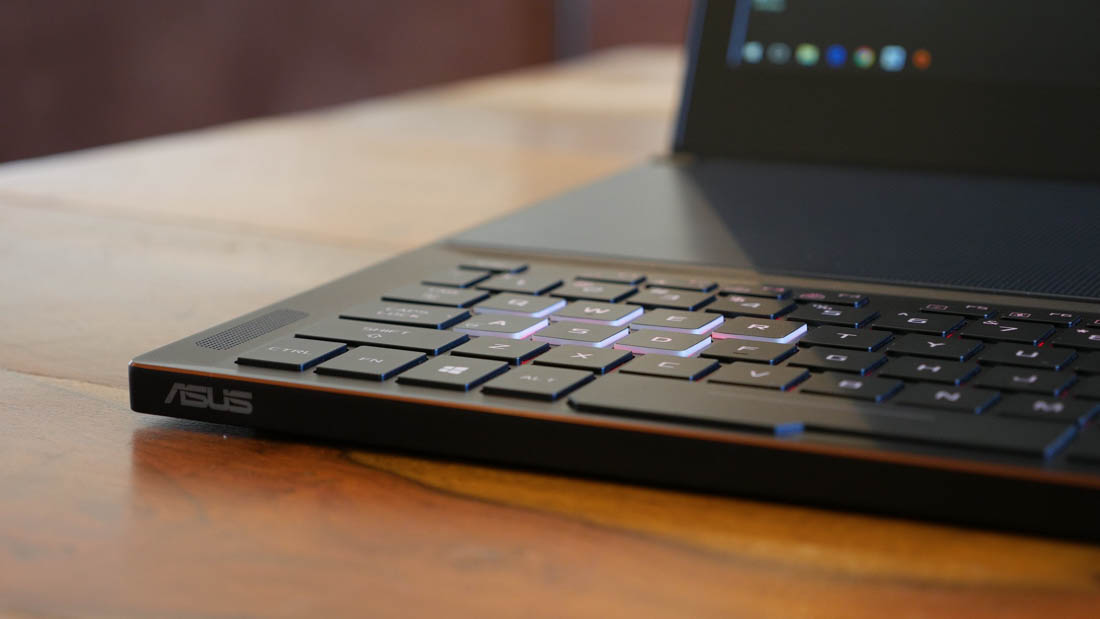
Of course there are some regions Asus genuinely couldn’t resist to embellish. There are purple LEDs that light up the bottom of the computer, and a pink-higlighted ROG brand at the in any other case pleasant brushed metallic lid.
With the cooler putting vents along the rear and on the left side of the pc, most ports are found towards the front of each facet. On the left is the power port, HDMI 2.zero and USB three.zero ports plus a three.5mm audio jack. On the right are two extra USB 3.zero ports and a Thunderbolt three port. The Zephyrus is just too skinny to consist of Ethernet, although Asus consists of a USB to Ethernet dongle inside the box.
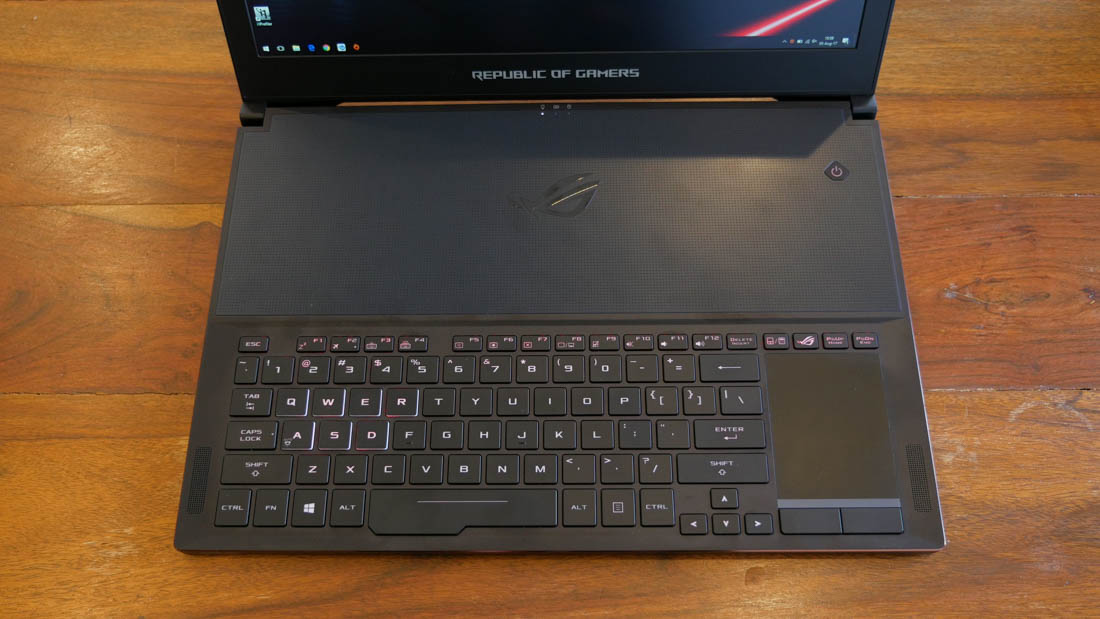
One of the largest issues I had with the Zephyrus design is the position of the keyboard. Laptops I’d formerly used with front mechanical keyboards weren’t exactly cushty to type on way to the better-than-ordinary position of the keys and the dearth of a wrist rest.
Asus has solved both issues with this laptop. Firstly, the Zephyrus is a slender system, so the keys are an affordable height off the table. Secondly, they consist of a rubber wrist relaxation within the box that can be placed alongside the bottom edge of the computer for added consolation. The rest doesn’t connect to the pc in any manner, however simply positioning it underneath the keyboard could make a distinction.
The keyboard itself is quite much like most other ultraportable keyboards, in that travel distance isn’t superb, even though the keys do have a pleasant tactile response thinking about the limited space available. Some of the modifier keys are shorter than ordinary to suit in the slightly above average audio system on the edges of the pc, even though this didn’t seem to affect the usability of the keyboard. The spacebar is sincerely very beneficiant.
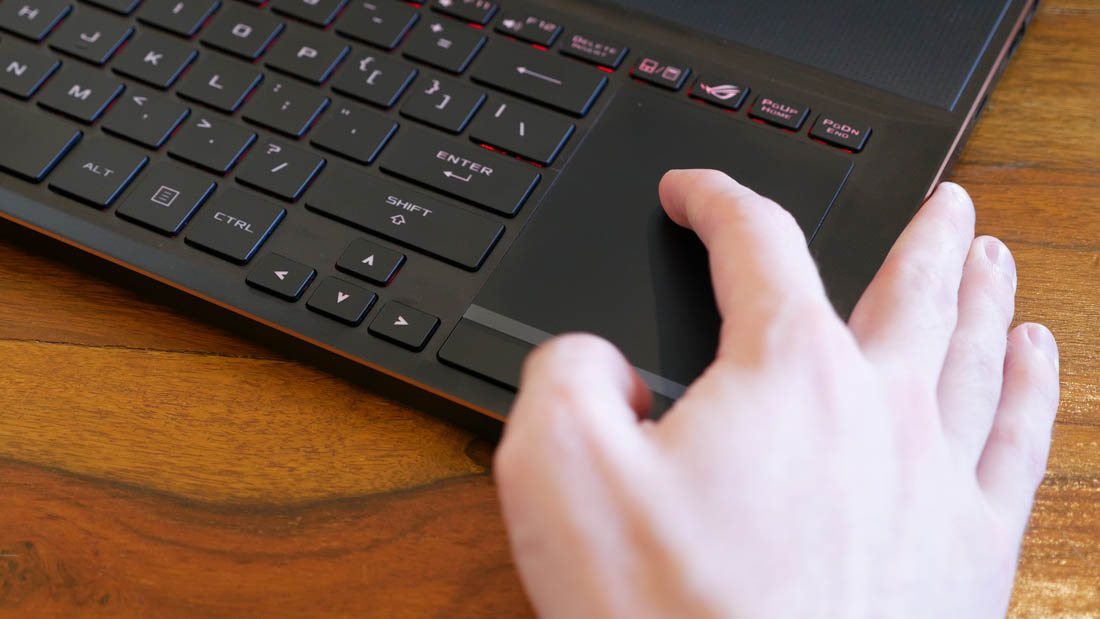
The trackpad is another factor of contention, due to its odd vicinity on the proper side of the keyboard. Personally I don’t thoughts the trackpad in this location, I discover it pretty smooth to apply and monitoring overall performance is ideal, even though certainly it won’t be for every person. It’s properly to look Asus acknowledging this, or even consisting of a wired mouse within the box for gaming. The trackpad additionally doubles as a numpad, and this functionality works far higher than a similar implementation I used lately on an MSI computer.
The show you get with the Zephyrus is pretty respectable and well suited to the hardware interior. It’s a 15.6-inch 1920 x 1080 LCD panel from AU Optronics, with a refresh rate of one hundred twenty Hz and guide for G-Sync. The show makes use of IPS technology, so viewing angles and assessment ratio are higher than a TN equal, whilst pixel reaction times are ok.
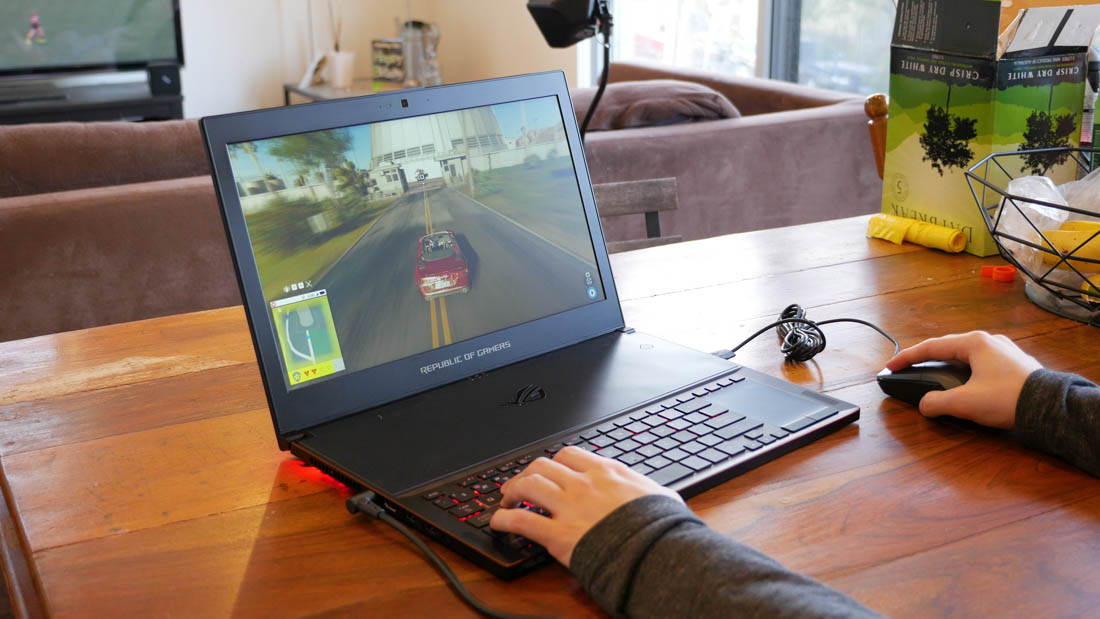
Putting the display through our standard array of tests reveals a maximum brightness of 310 nits, that's first rate, together with a contrast ratio of 1225:1. The show is a bit too bloodless for correct work, due to a coloration temperature of 7126K, even though a grayscale dE2000 common of 2.sixty nine isn’t horrible. Saturation and ColorChecker dE2000 averages of 3.36 and three.92 aren’t suitable for coloration correct work, although nor is outrageously horrible for a gaming computer.
0 Response to "Asus ROG Zephyrus Gaming Laptop Review"
Post a Comment